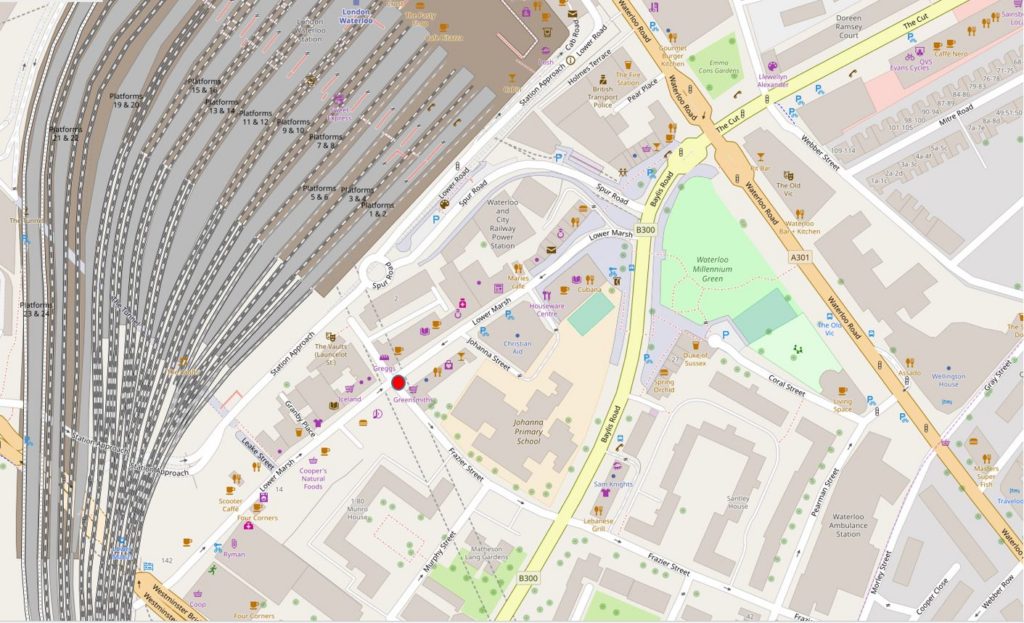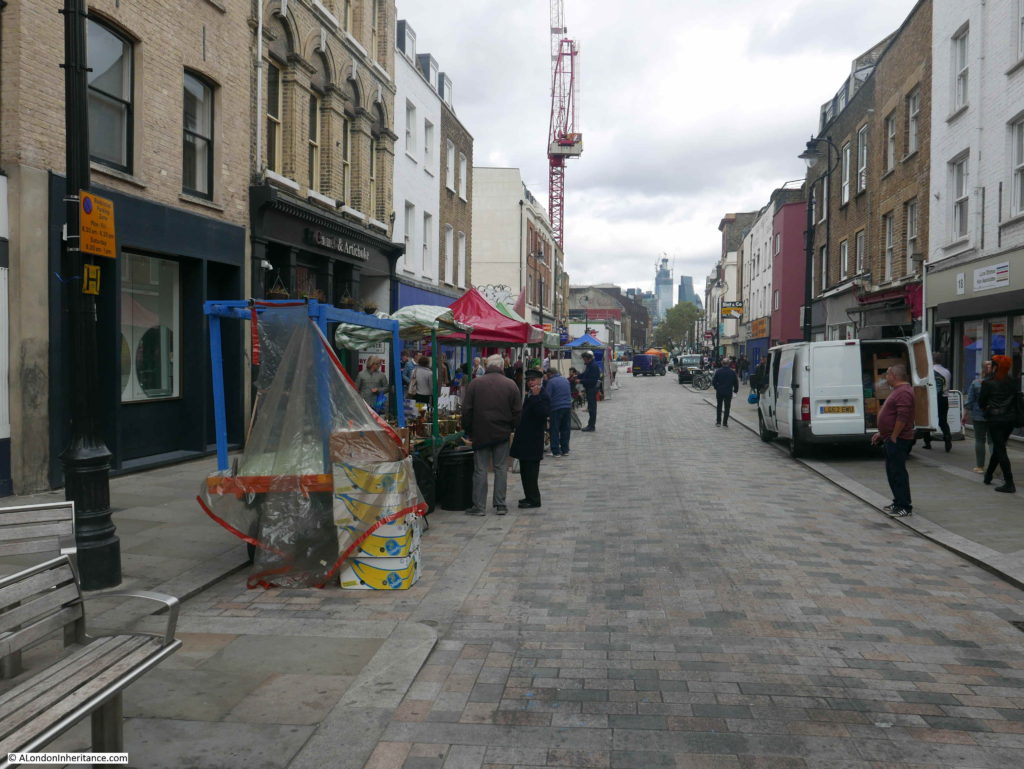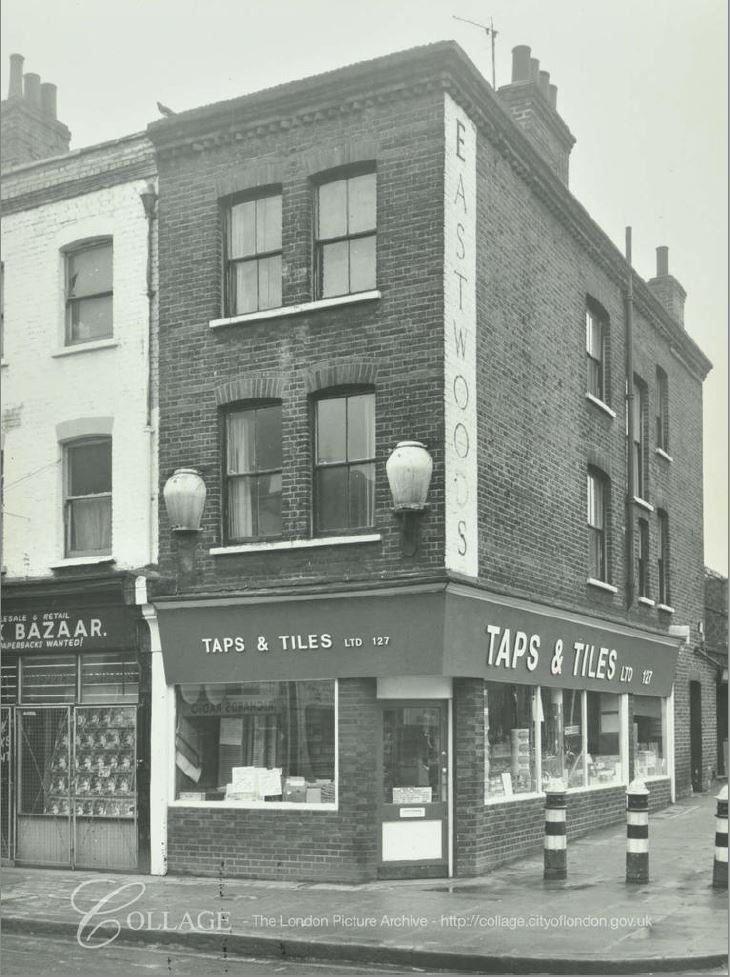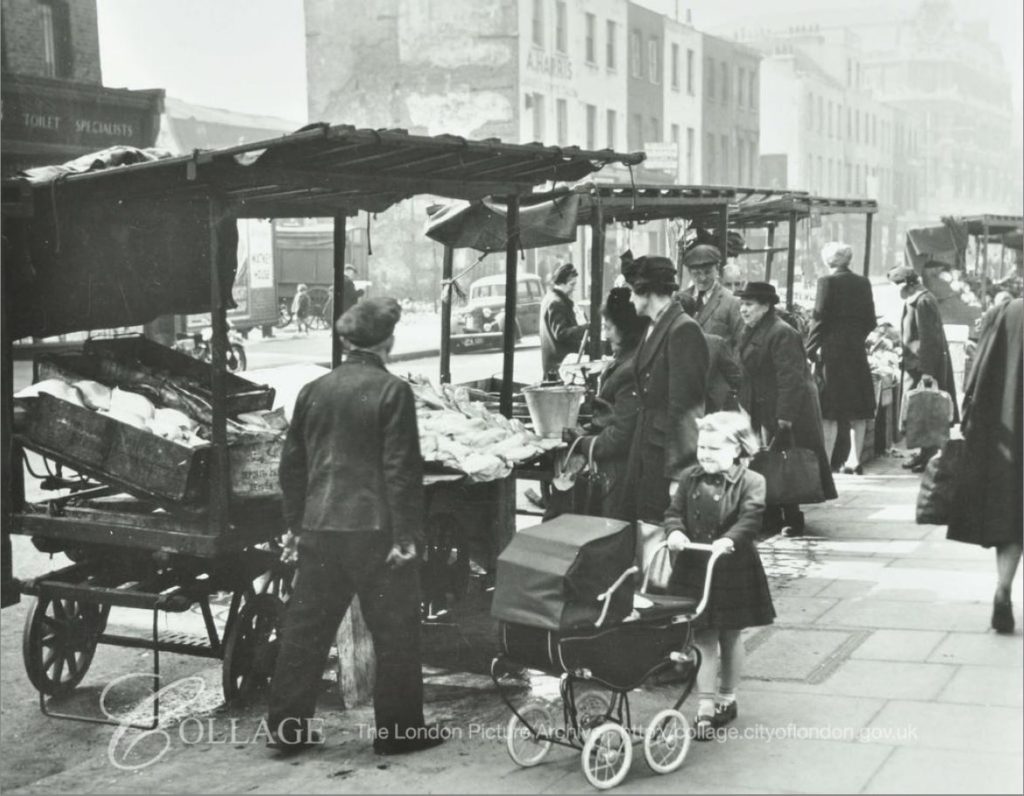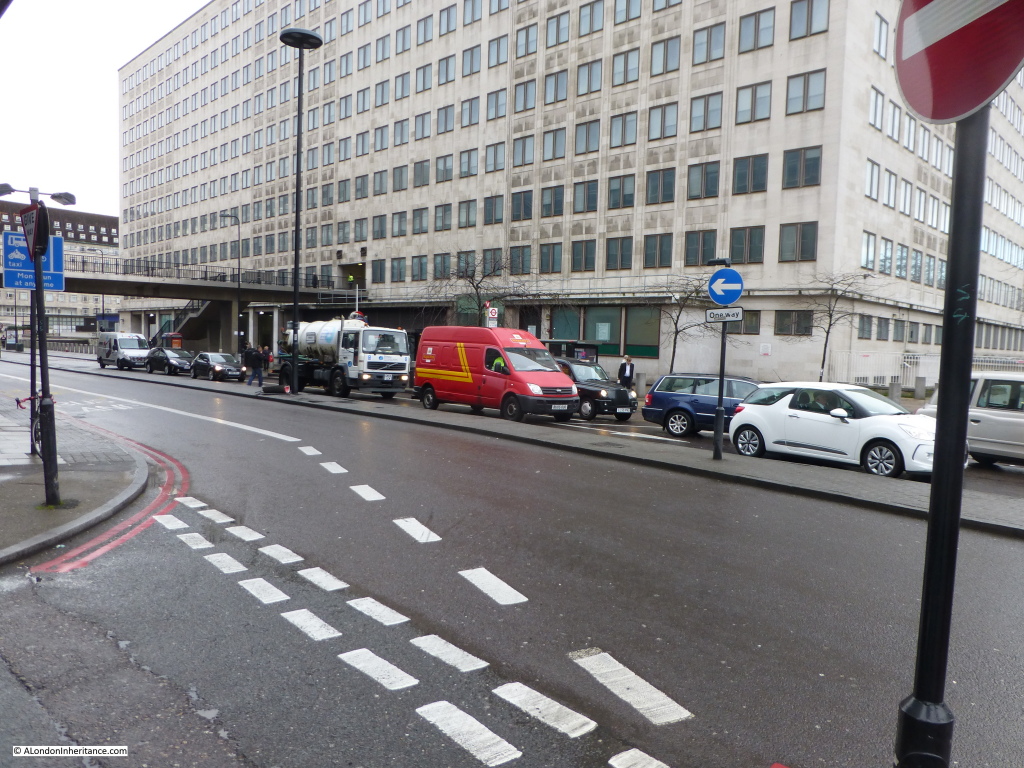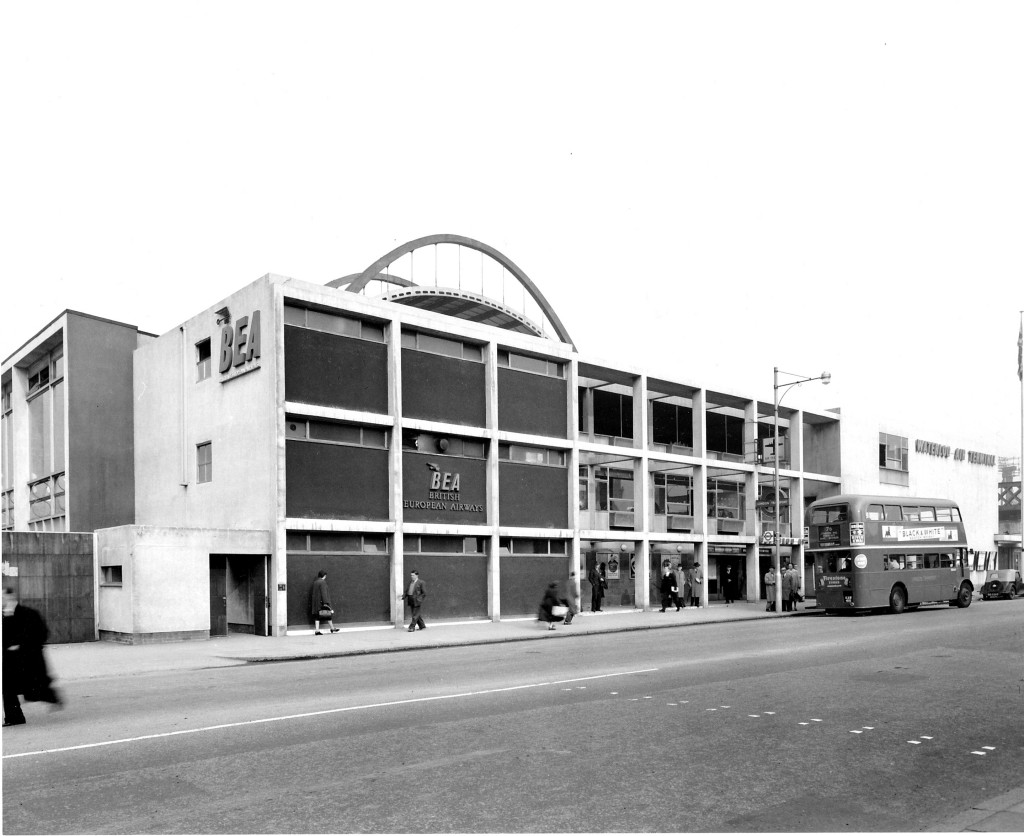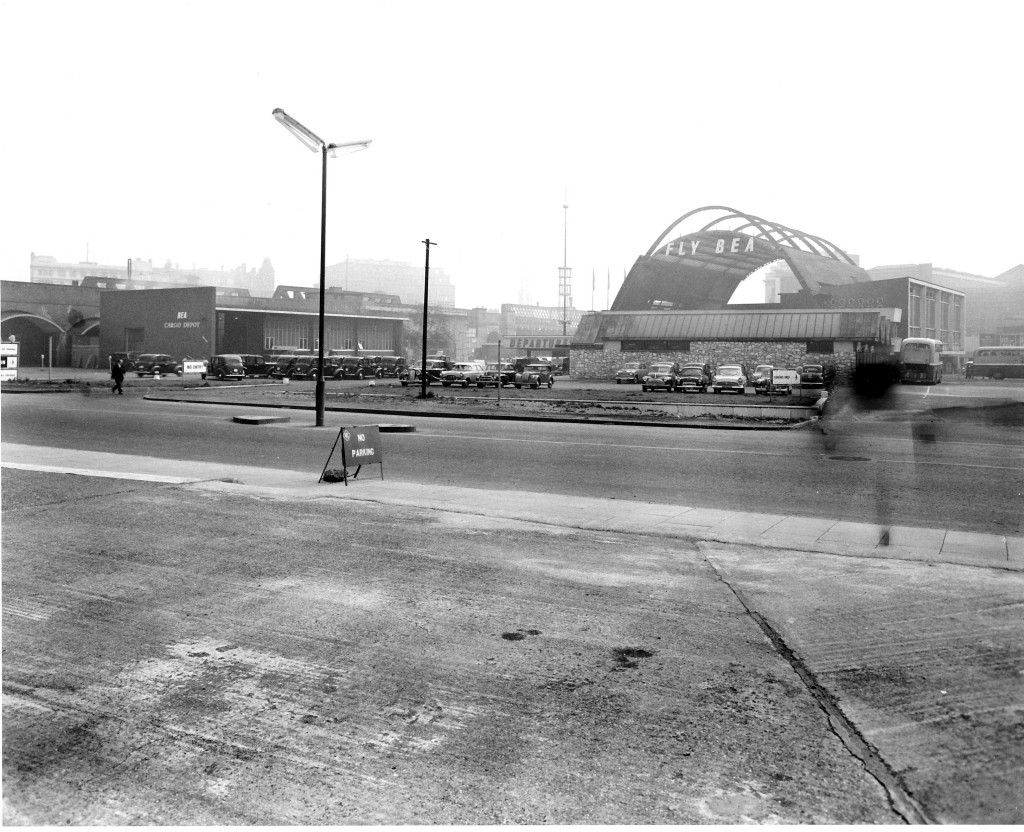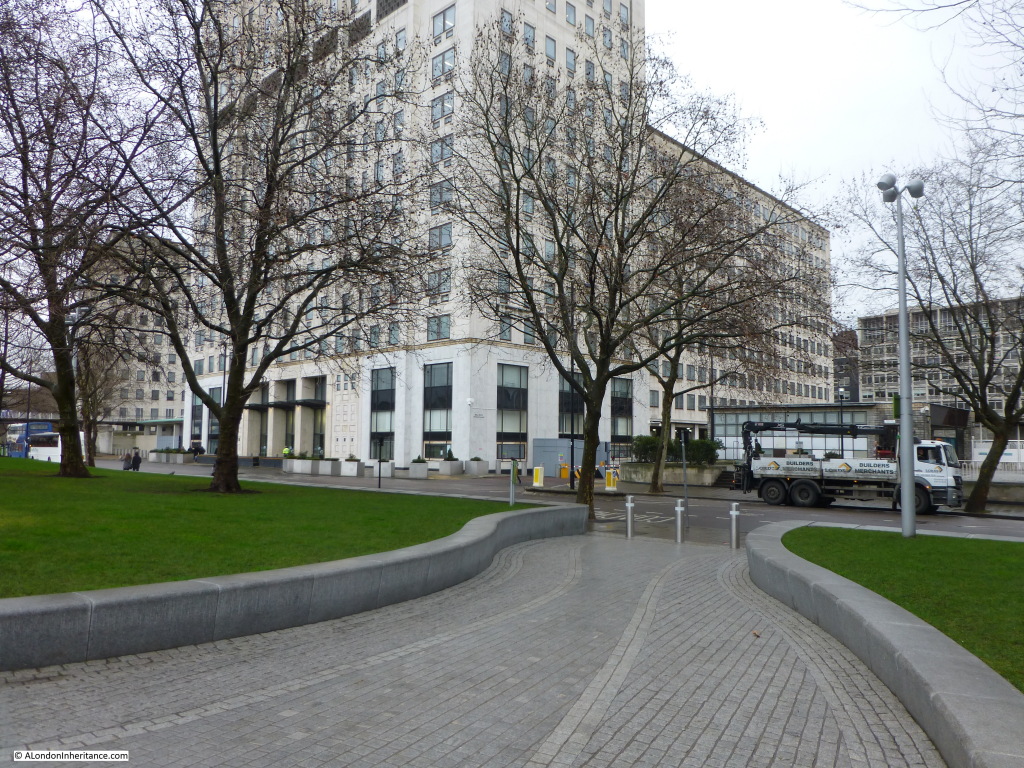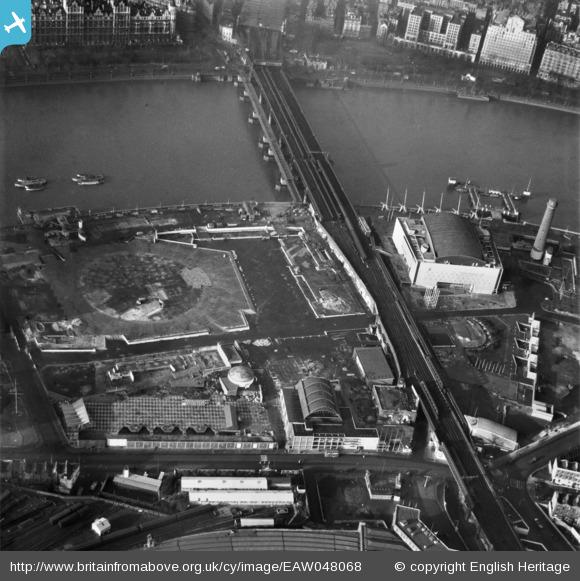Roundabouts in cities are a problem. Whilst they are built to simplify traffic flow, they take up a large amount of space, and leave a central area for which it is difficult to find a purpose due to its isolated location.
One such roundabout is at the southern end of Waterloo Bridge, where York Road, Waterloo Road, Stamford Street and the approach to Waterloo Bridge all meet. I photographed the roundabout from the Shell Centre viewing gallery in 1980:

Beneath the roundabout were a large number of pedestrianised access routes to the surrounding streets and the central space provided access between these, so you could walk between any of the surrounding streets without having to cross a road.
It was always a rather bleak space. Concrete planters were scattered around the central space, and for a time in the 1980s the GLC organised what we would now call a pop-up market at lunchtimes, hoping to attract workers from the surrounding offices, although with traffic on the surrounding roundabout, it was not that pleasant and most people headed to the Jubilee Gardens or the walkway alongside the Thames.
A rather innovative use for the central space was found in the late 1990s when the British Film Institute opened an IMAX Theatre in the centre of the roundabout:
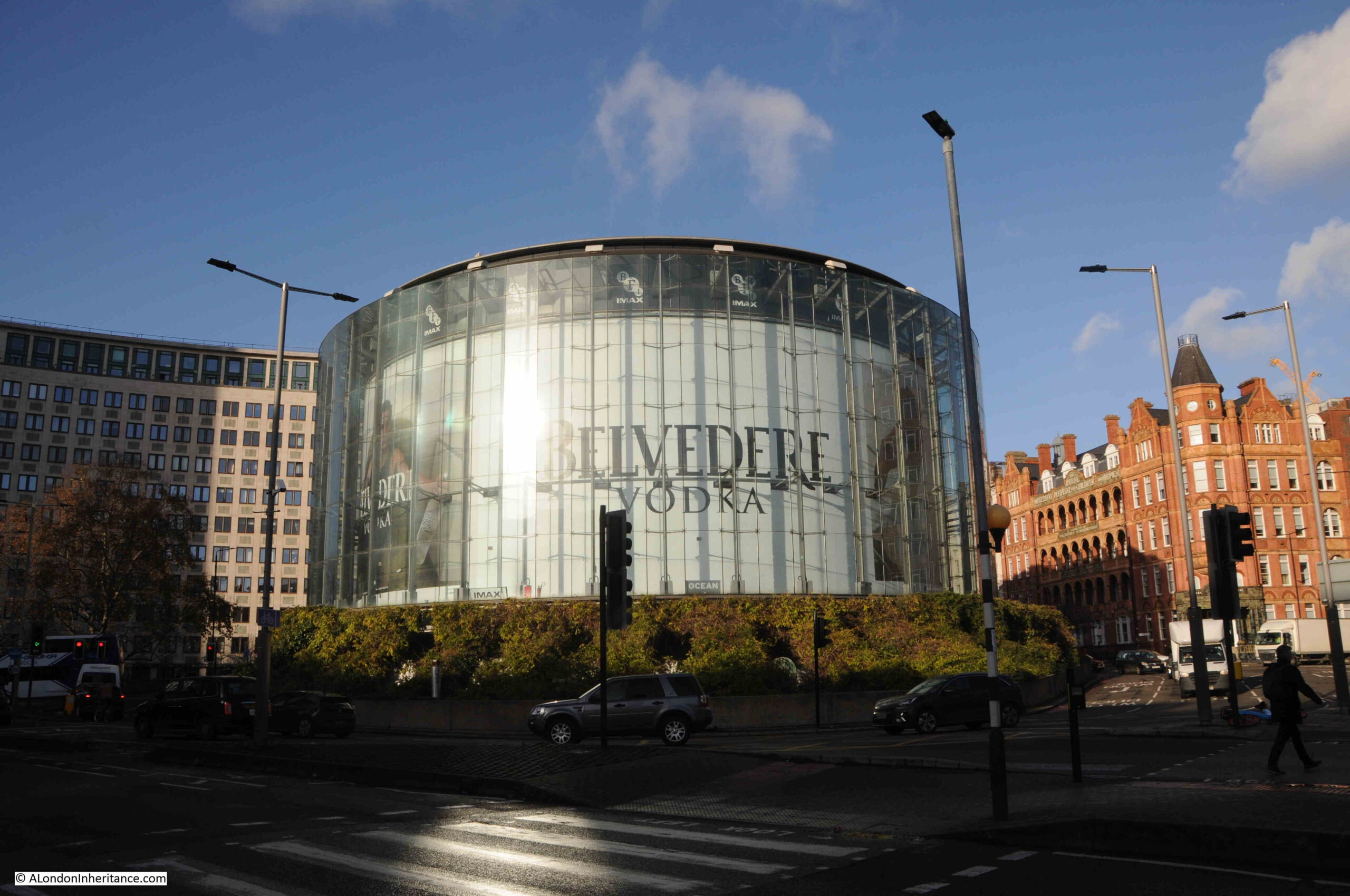
The IMAX is of circular design to fit the central space, and is surrounded by a glass wall which makes the building ideal for advertising and for displaying films that are being shown in the theatre. It is a very obvous landmark when approaching from any of the surrounding streets, and with the low sun of a December day, produces strange light reflections on the streets of the roundabout.
So, a very clever use of a difficult city space. One that has to overcome a number of obstacles, for example vibration and soundproofing from both the traffic on the roundabout, and the Waterloo and City line which runs just 4 metres below the theatre, which gives me an excuse to show a map of the route of the Waterloo and City line, with the location of the roundabout and IMAX marked by a red circle (Credit: The Engineer, July 26, 1895, Public domain, via Wikimedia Commons):
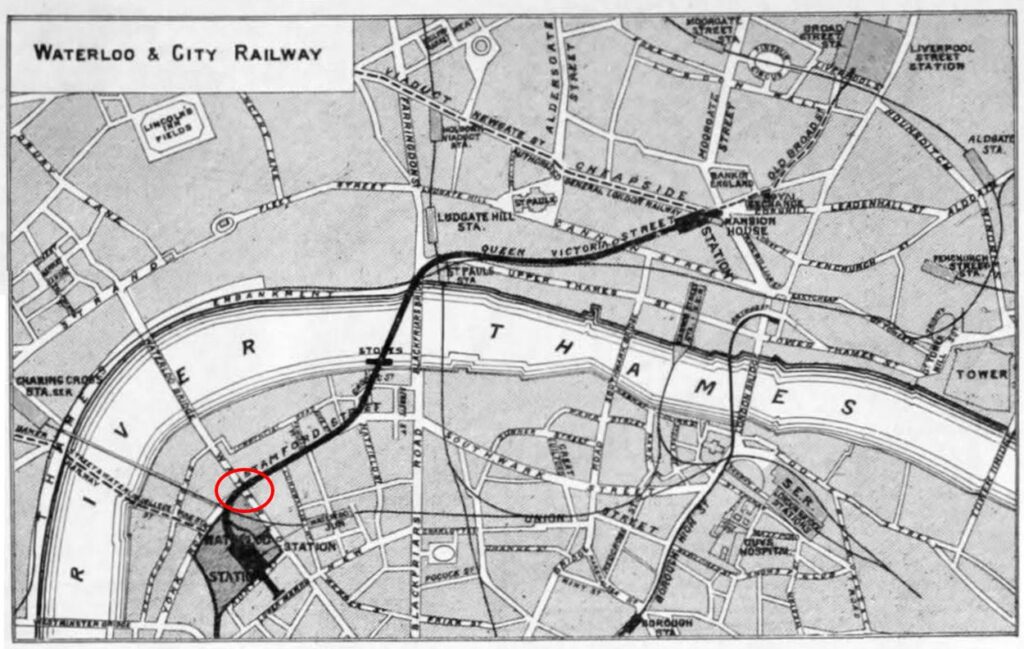
The IMAX Theatre was opened in 1999 and designed by Bryan Avery Architects. I have walked past the IMAX countless times, but what got me thinking about the use of space and the problems of inner city planning and maintenance was when I was walking alongside the roundabout in late December.
Access to the IMAX is via the steps down from the surrounding streets that also provide access between the streets without having to cross at surface level.
The steps down in the following photo are on the side of the roundabout between York Road and Waterloo Road. It was the start of the Christmas school holidays and I noticed a mother and child going down the stairs, then coming up, looking around, walking to another set of stairs, then back to the one in the photo. They were going to the IMAX, but there is no obvious signage and the stairs down do not look the most inviting.
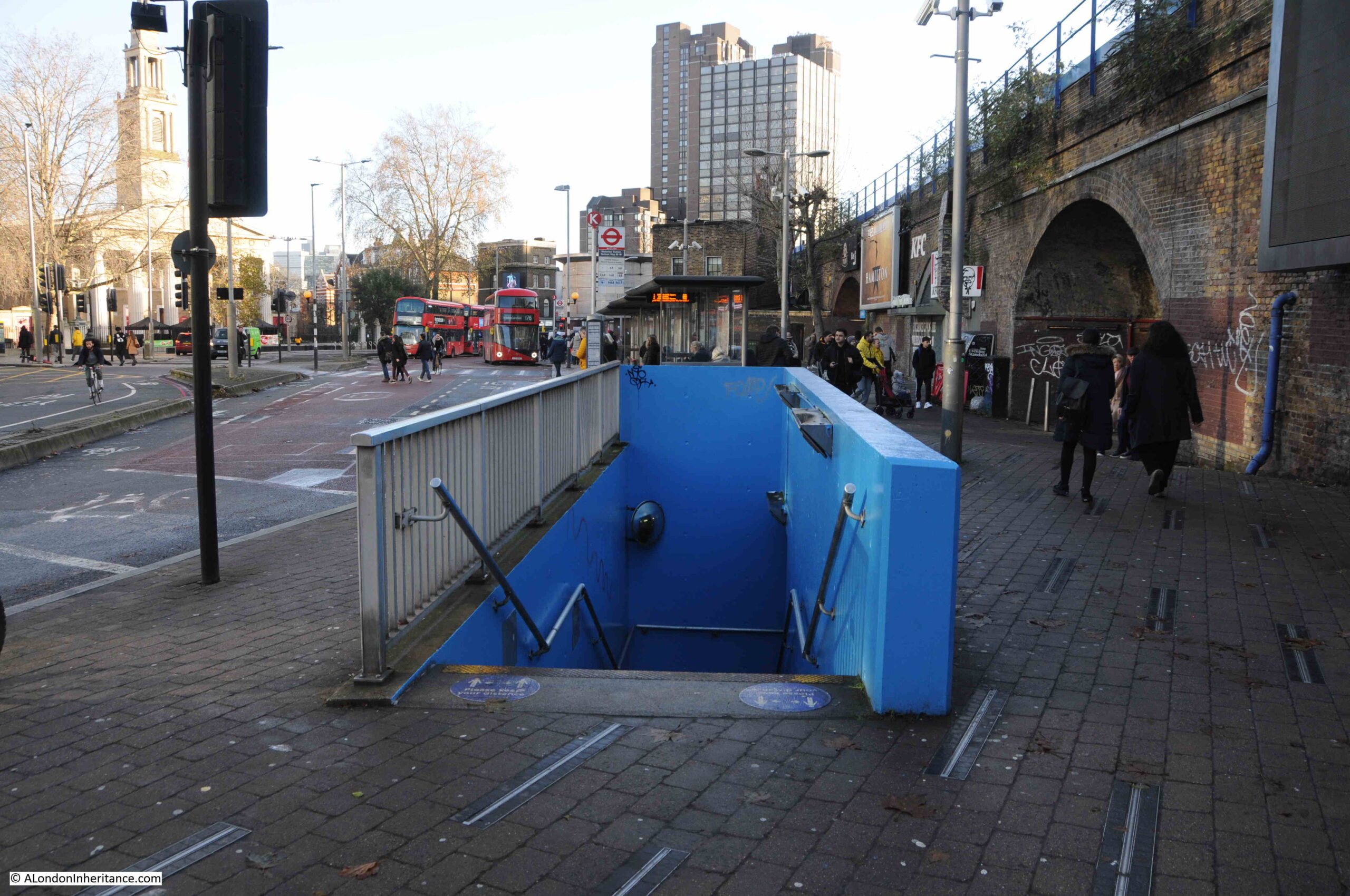
I walked down the stairs, and met the smell that is familiar to such spaces:
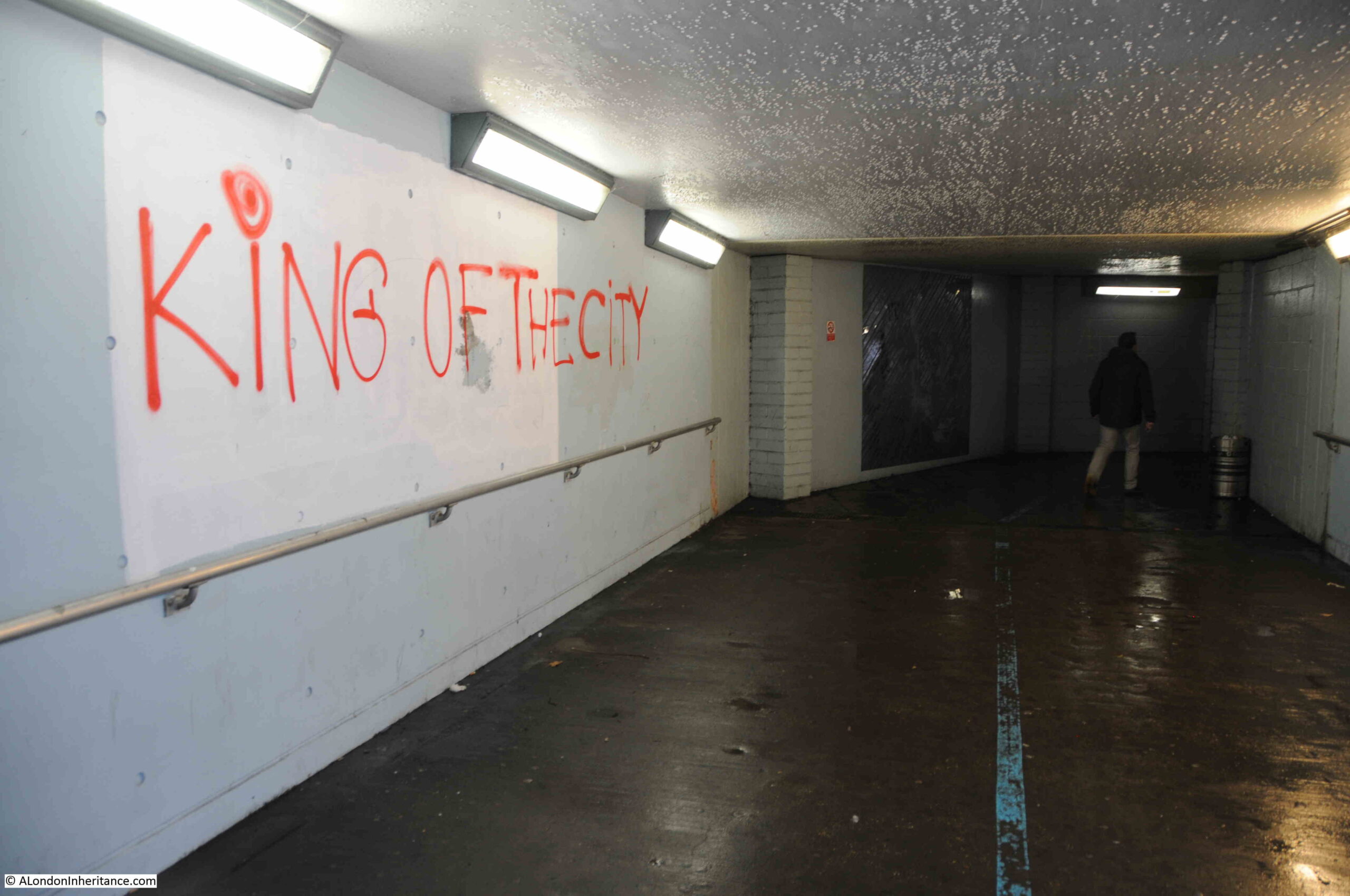
Tunnel under the roundabout leading to the central space and the IMAX:
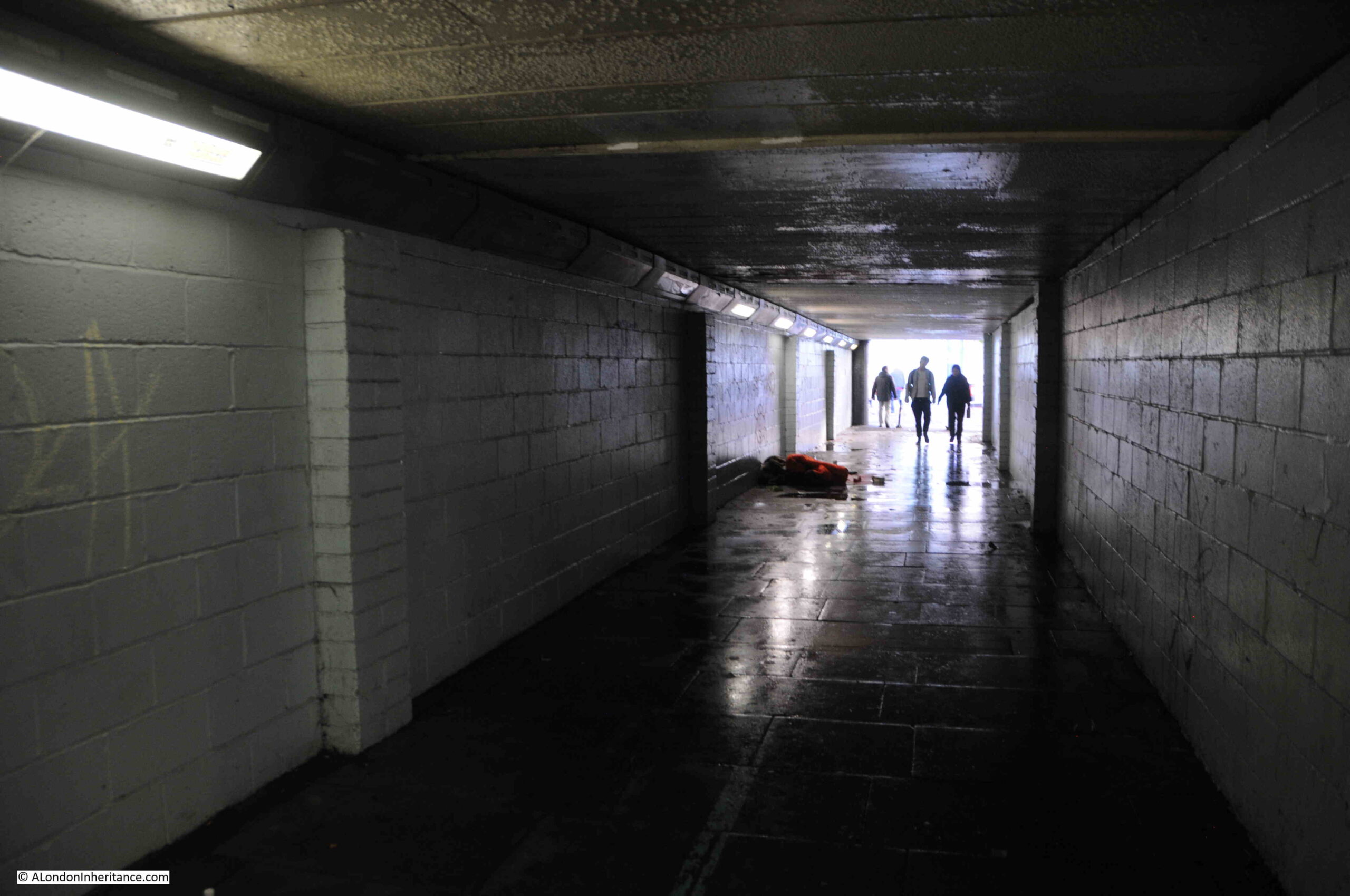
Once in the central space of the roundabout, we can see the curving wall of the IMAX and the extensive planting that creates a rather unique space:

More than 2000 plants were originally planted, comprising of honeysuckle, jasmine, wisteria, clematis, ivy, Boston ivy and Japanese vine. An automated watering system was installed, which looks to have worked well as the plants now look very established and have grown up from the side walls, across supporting cables and up to the sides of the IMAX:

There is a very tenuous link between the current centre of the roundabout, and an earlier use of the space, when it was occupied by Cuper’s Gardens, one of the many gardens and places of entertainment that were found on the south bank of the river in the 17th, 18th and early 19th centuries.
The following map is interesting as it shows the area in 1825, eight years after Waterloo Bridge was opened. It is titled “A Plan of Cuper’s Gardens with part of the Parish of Lambeth in the year 1746 showing also the site of the Waterloo Bridge Road and the new roads adjacent”.
The map helps define the exact location of Cuper’s Gardens as the church of St. John is also shown. The large roundabout (circled) now covers part of Cuper’s Gardens at the junction with Stamford Street:

The “gardens” around the IMAX are very different today, and the whole area is rather a surreal space. The outer wall has been painted light brown, possibly to resemble the earth through which the space descends. Large, twisted trunks (which look like roots) of the presumably now over 20 years growth extend up along the walls, and the outer wall is occasionally cut through with the access tunnels to the streets above:

The entrance to the IMAX Theatre:

Looking up between the planting and the curved glass wall of the IMAX dominates the view:
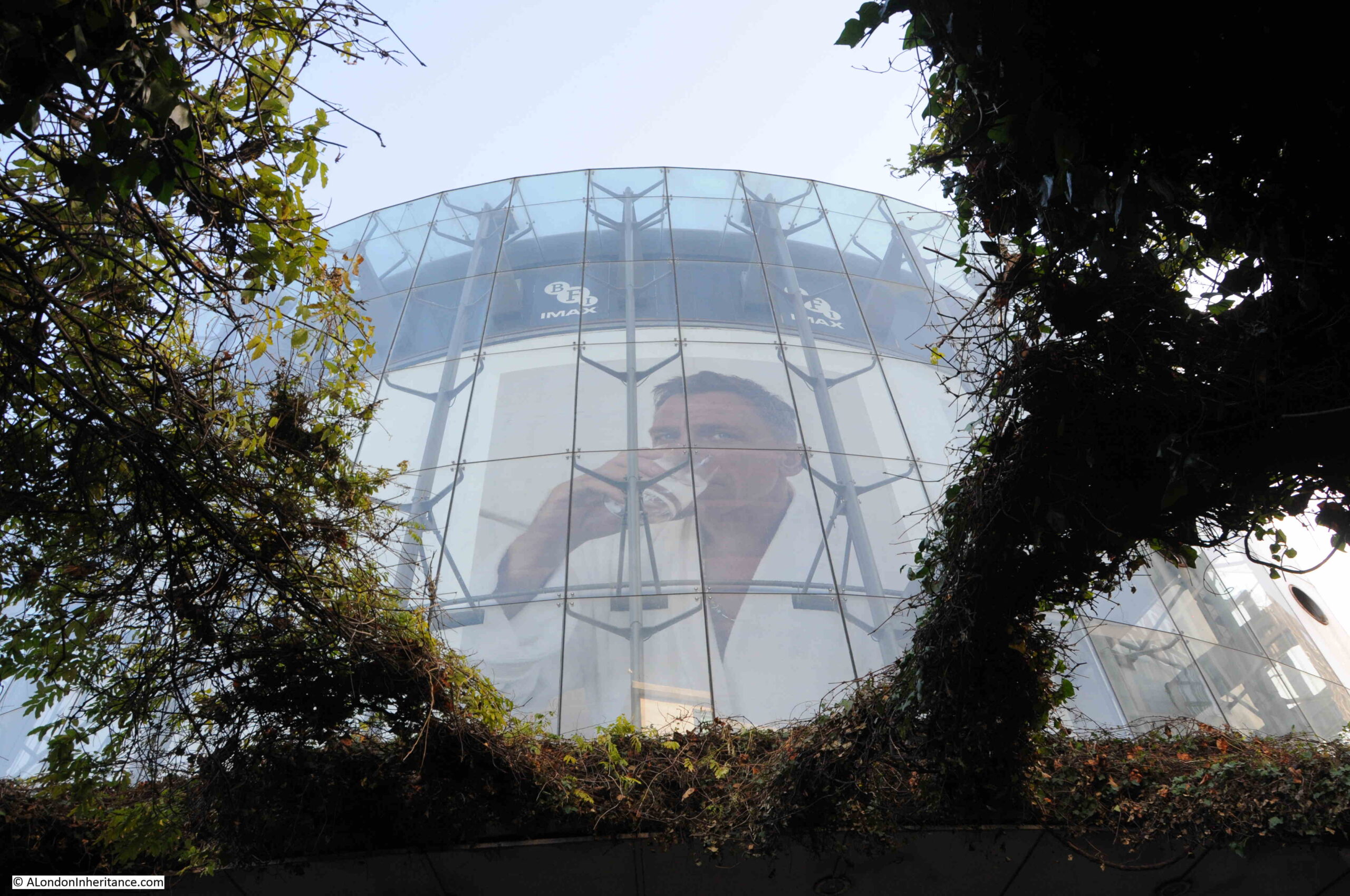
When the IMAX was opened, as well as the central space surrounding the theatre, the walkways and tunnels leading up to the streets were cleaned, restored and painted, with many of the walls being painted blue, and some lighting being set into the walls.
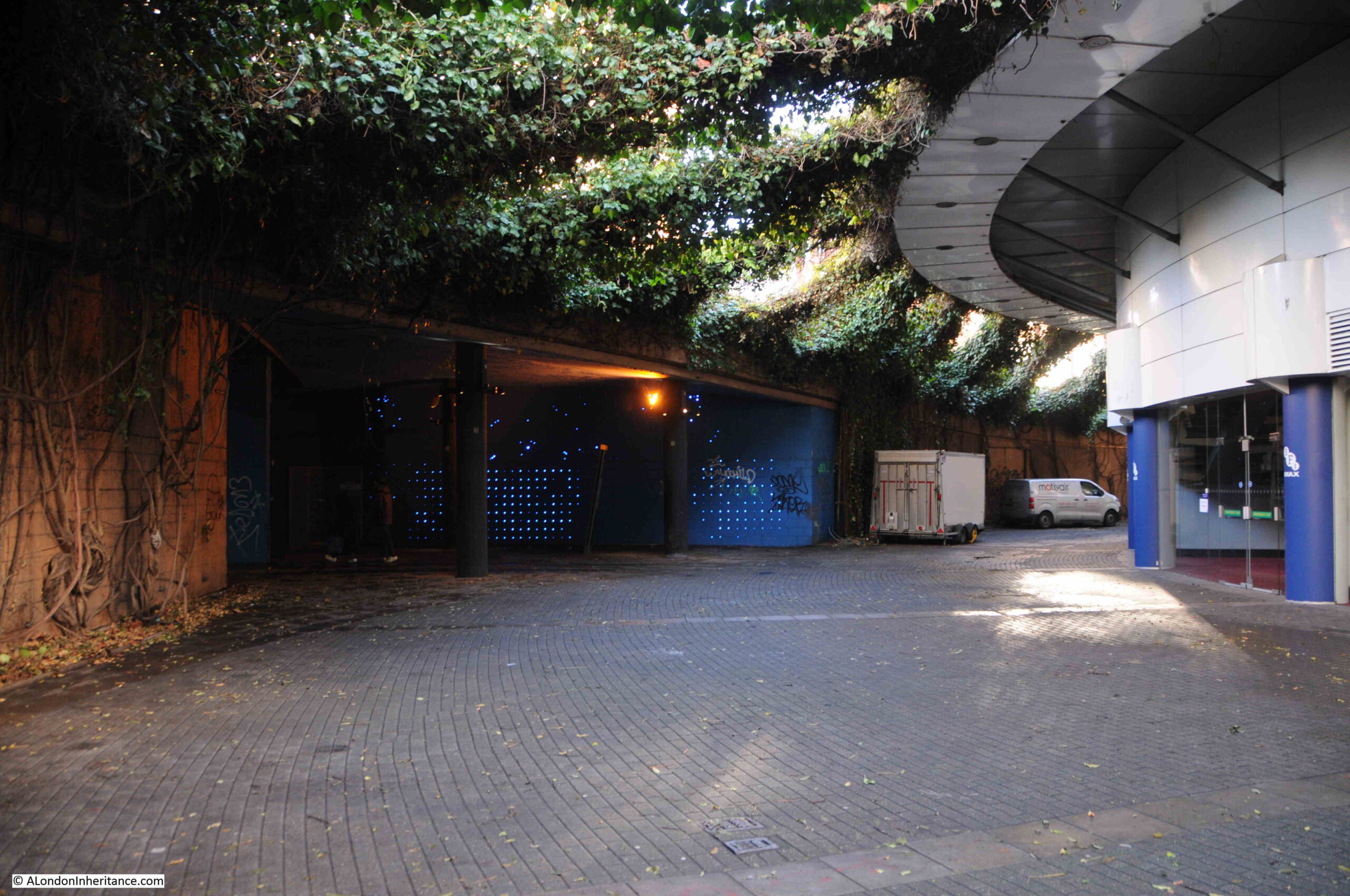
You can see the effect that this was intended to create. The central space with substantial overhead plant growth, the surrounding earth coloured walls, covered in the trunks of the plants, with the walls being cut through by the blue painted walkways to the surrounding streets.
It all creates an intriguing and surreal space, appropriate for walks to the IMAX.
Service access tunnel and pedestrian walkway leading to Belvedere Road:
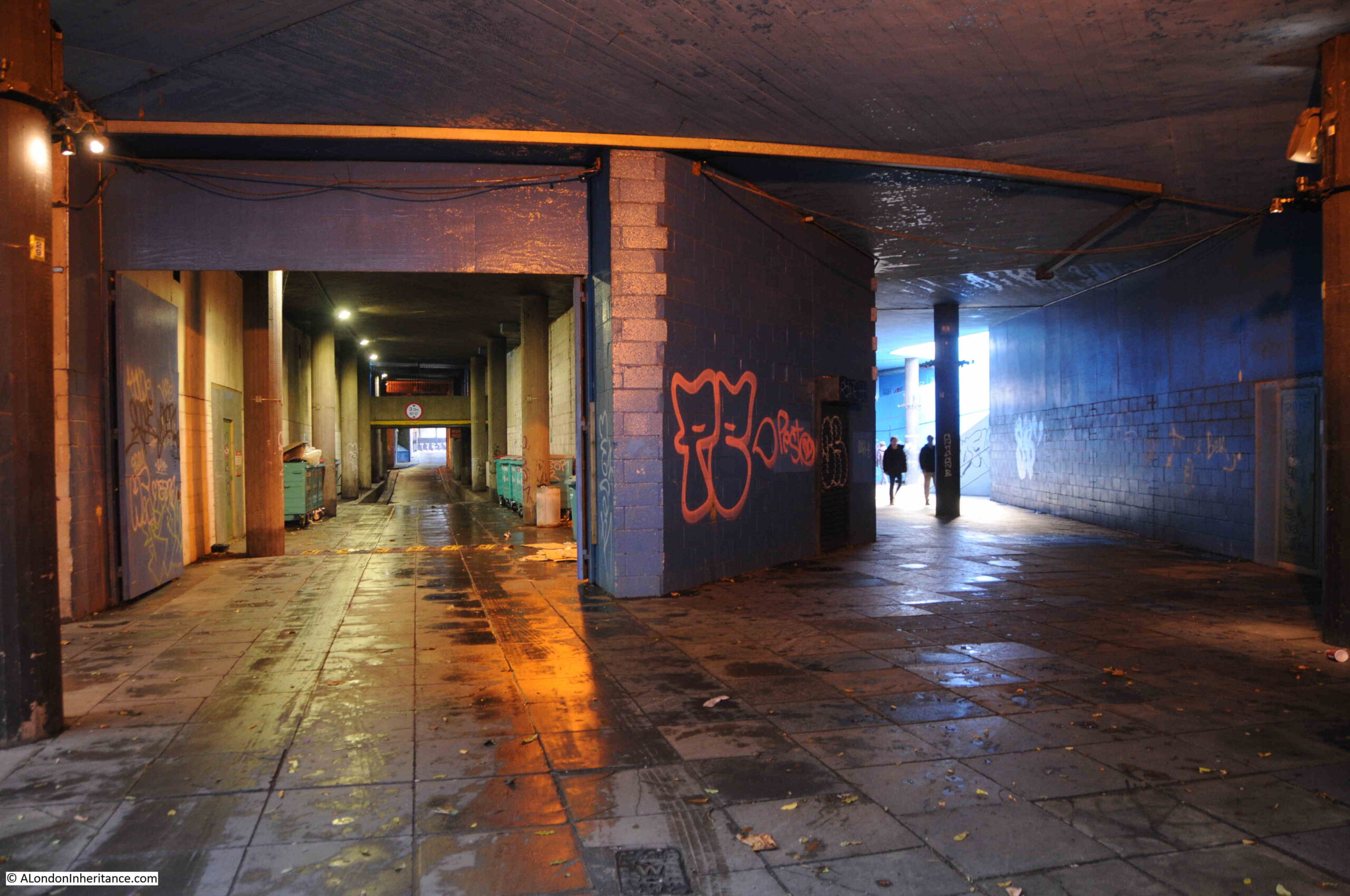
View up through the plants with the new tower blocks that have taken much of the old Shell Centre site:
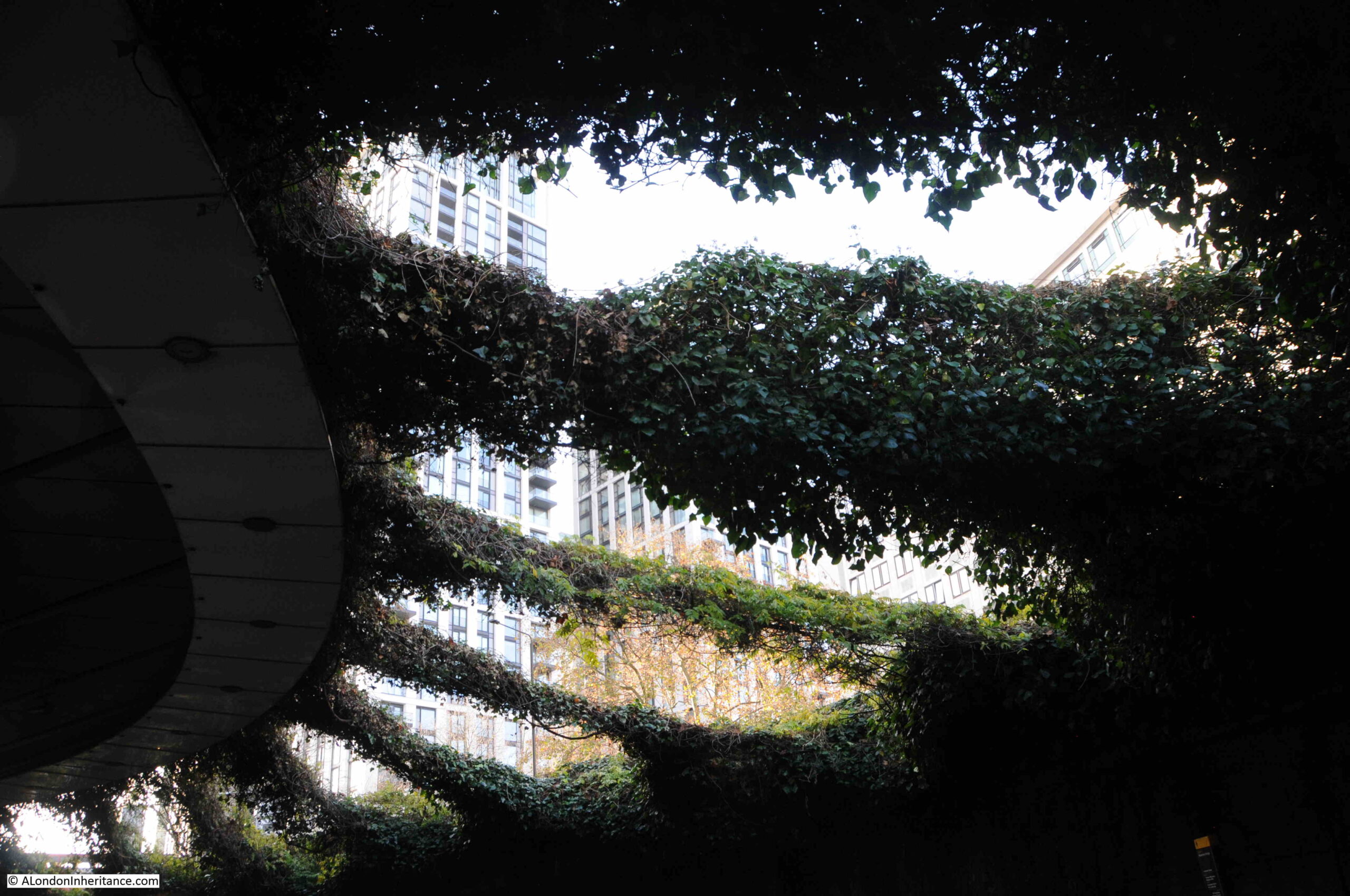
Walking up to the surrounding streets, and it is clear what was intended, and the problems that result in the walkways not being that much of an inviting route to the IMAX. The following photo shows the walkway up to the western side of Waterloo Bridge:
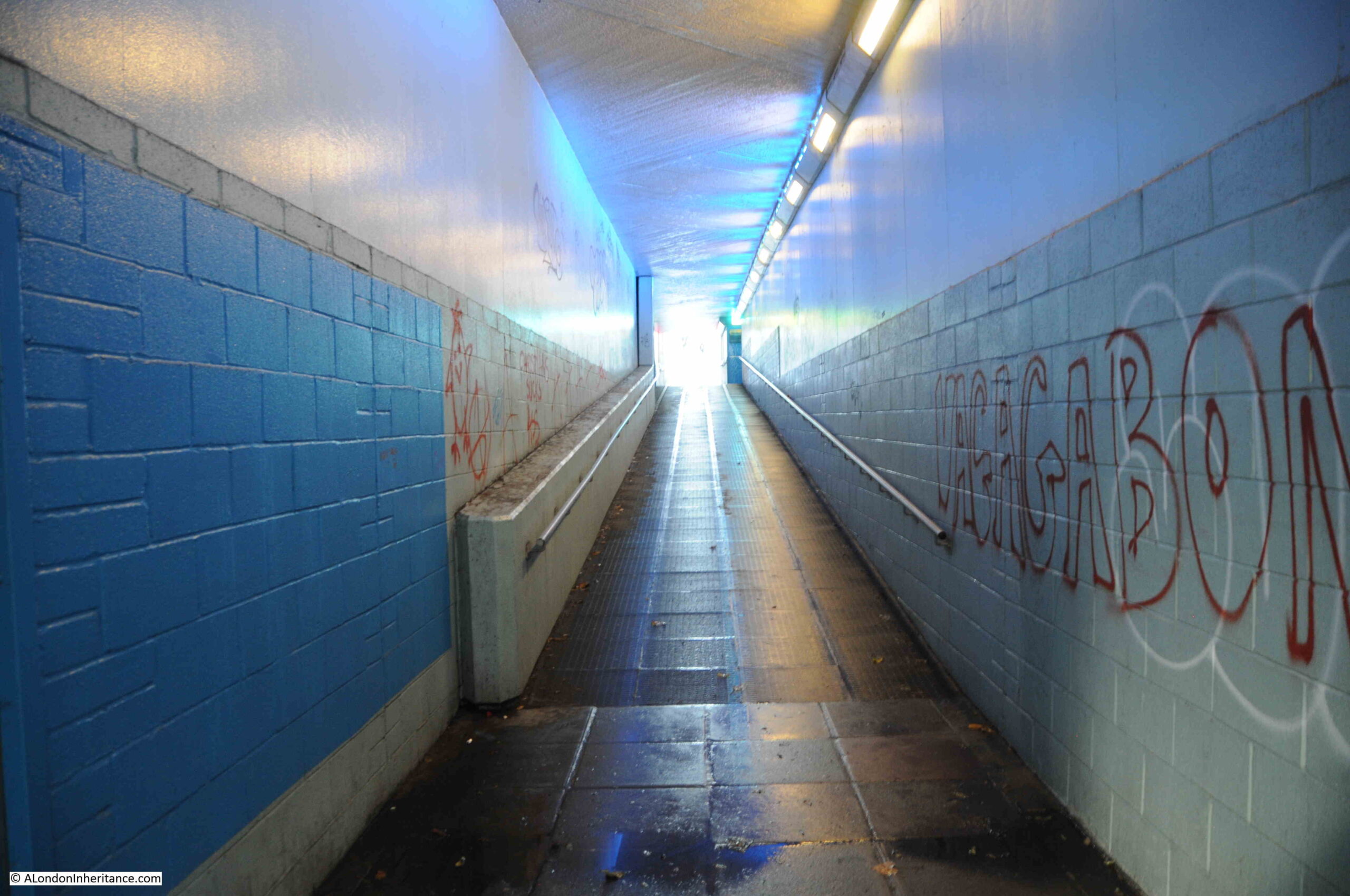
Many of the walls are covered in graffiti, including the main walkway, and the tunnels that connect the east and west walkways:

Many of these walkways and tunnels make really good subjects for photography. The blue walls, the grafitte, and the hidden destination of these tunnels adds to their mystery, however if you did not know the area, were taking children to the IMAX, and it was at night, they are not inviting, and there were very few people using them as I wandered around taking photos.

Global conspiracy theories meet South Bank direction signs:

Looking back down the walkway from the western side of Waterloo Bridge:

Whilst the view of the IMAX in the above photo provides an indication of the destination of the walkway and the tunnel, it does not encourage you to walk down, there should be signs above the tunnel and better lighting in the entrance to the tunnel.
One of the walkways that crosses between the west and east sides of Waterloo Bridges crosses the service tunnel:
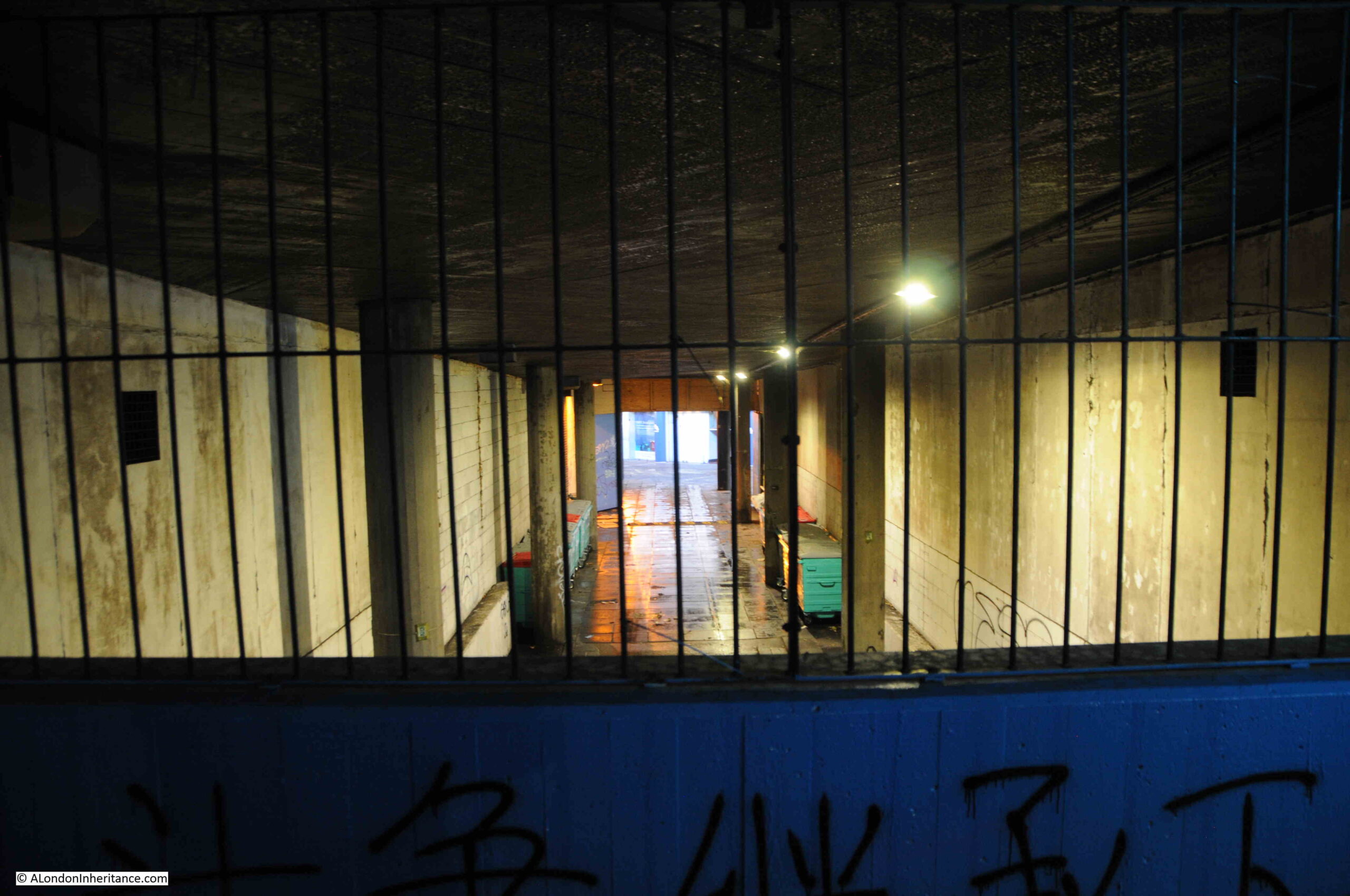
Walkway up to the eastern side of Waterloo Bridge:
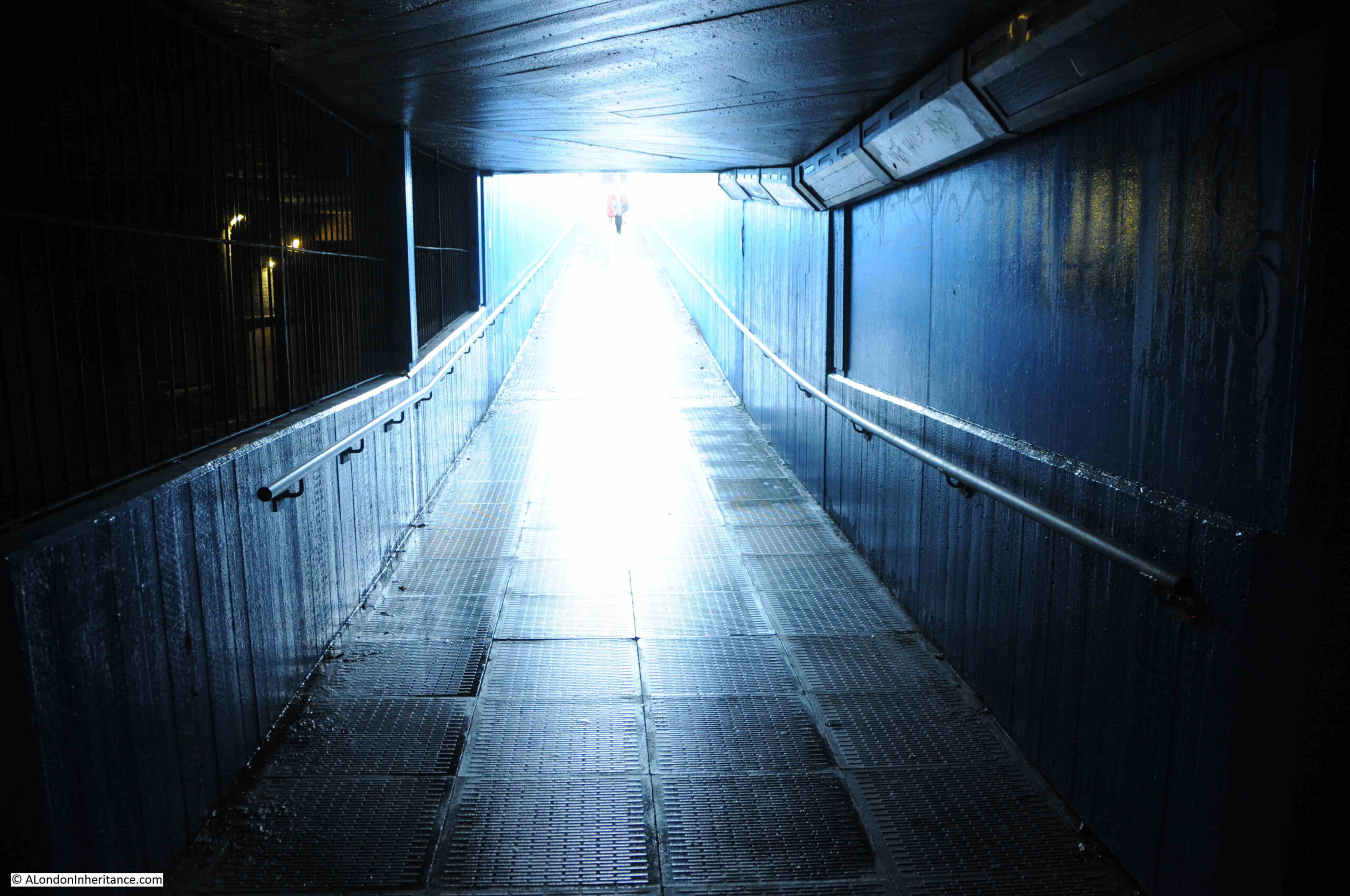
This is the view from the eastern side of Waterloo Bridge, with the IMAX in the centre of the roundabout, and the blue painted entrance to the walkway and tunnels that lead to the IMAX:
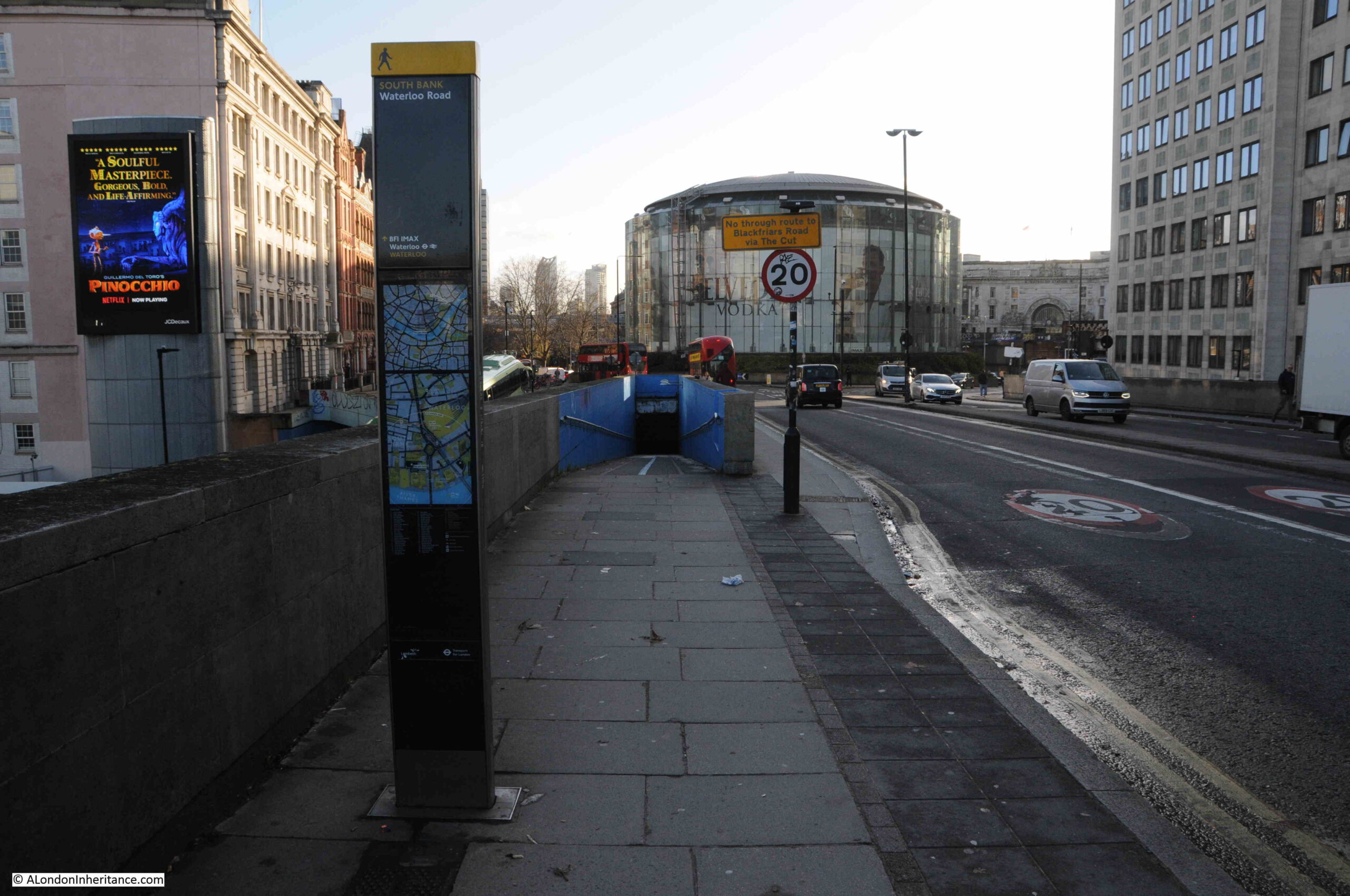
The direction post to the left of the pavement does have a direction to the IMAX with an arrow pointing straight up, the implication being to head down the tunnel rather than walk on the pavement to the right. As with the other entrances, the tunnel does not offer an inviting prospect. No signage above the point where the walkway enters the tunnel and poor lighting at the entrance to the tunnel so it looks very dark and forbidding.
The Waterloo IMAX Theatre is a brilliant use of a difficult space, as well as being a building that has some technically clever ways of avoiding sound and vibrations. For example, the first floor is mounted on oil-damped spring bearings, and the walls inside the glass outer wall are 750mm thick. During construction, pile foundations were installed around the tunnels of the Waterloo and City line. A thick concrete slab was then built on top of the pilings to support the weight of the building above.
The IMAX apparently has the largest screen of any cinema in the UK and has the equipment to support normal film format as well as IMAX Digital and 3D.
A shame that whilst the intention with the tunnels and walkways is clear, and they could have provided a creative and innovative space, what appears to have been limited maintenance and care over the years has resulted in a rather poor experience when walking to the theatre at the centre.
TfL did have plans back in 2017 to transform the area and remove the roundabout, creating a surface level pedestrianised space up to the IMAX, however these plans appear to have been paused due to “the pandemic and current funding restraints”.
Given TfL’s current funding constraints, I suspect the roundabout will be there for some years to come.
More 1980 photos from the viewing gallery of Shell Centre are in this post.




